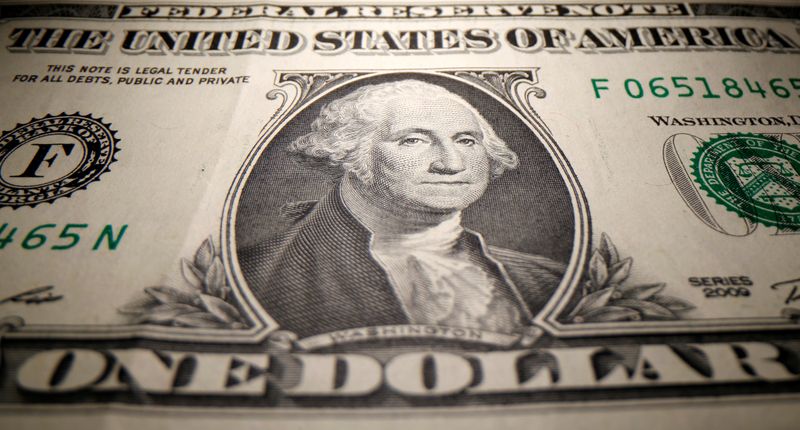By Herbert Lash and Harry Robertson
NEW YORK/LONDON (Reuters) -The dollar rose on Wednesday as investors shrugged off Fitch’s U.S. credit rating downgrade while data showing a larger-than-expected increase in private payrolls in July bolstered the greenback as it points to labor market resilience.
Private payrolls rose by 324,000 jobs last month, the ADP National Employment report showed, more than an increase of 189,000 that economists polled by Reuters had forecast.
The U.S. labor market is gradually slowing after the Federal Reserve’s hiking of interest rates by 525 basis points since March 2022. But the economy remains strong, as indicated by the Atlanta Fed’s GDPNow running estimate of real GDP growth for the third quarter at 3.9%.
“The dollar is likely rising more in response to the economic data that continues to be stronger and therefore the market thinks that the Fed will continue to raise rates,” said Michael Arone, chief investment strategist for State Street (NYSE:STT) Global Advisors in Boston.
“Those interest rate differentials compared to other countries will continue to expand or be strong,” he said. “The dollar is getting a rally, in conjunction with a little bit of flight to safety.”
The dollar index, a measure of the U.S. currency against six peers, rose 0.57% to a fresh three-week high. The dollar index has gained 3.0% from a 15-month low on July 18.
Fitch on Tuesday downgraded the United States to AA+ from AAA in a move that drew an angry response from the White House and surprised investors, coming despite the resolution two months ago of a debt ceiling crisis.
It cited likely fiscal deterioration over the next three years and repeated down-to-the-wire debt ceiling negotiations that threaten the government’s ability to pay its bills.
The downgrade contains no new fiscal information, Goldman Sachs (NYSE:GS) said in a note, adding that it did not believe there are any meaningful holders of Treasuries who will be forced to sell because of the downgrade.
There was also little negative reaction in the world’s most-traded currency pair, with the euro down 0.37% to $1.0941 as analysts said the dollar was likely benefiting from its status as a safe haven.
The downgrade hit risk appetite around the world, with MSCI’s gauge of global equity performance falling 1.55%.
The yen initially clawed back some recent losses as traders assess the Bank of Japan’s tack on monetary policy as traders were still assessing the implications of the BOJ’s move on Friday to loosen its grip on interest rates.
The yen later traded little changed, edging up 0.07% to 143.24 per dollar.
Deputy governor Shinichi Uchida said on Wednesday the central bank’s decision was aimed at making its massive stimulus more sustainable and was not a prelude to an exit from ultra-low rates.
Sterling traded down 0.45% on the day at $1.272.
The Bank of England sets interest rates on Thursday and the market is uncertain whether it will deliver a 25 or 50 basis point increase from the current 5%.
The Australian dollar fell 1.00% to $0.655, after earlier sliding to its lowest since June at $0.657.
It was extending a sharp fall from the previous session after the Reserve Bank of Australia on Tuesday held interest rates and signaled that it might have finished tightening.



